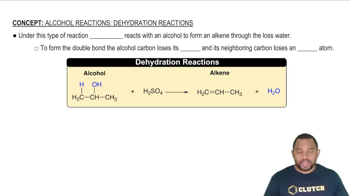Here are the essential concepts you must grasp in order to answer the question correctly.
Balanced Chemical Equations
A balanced chemical equation represents a chemical reaction where the number of atoms for each element is the same on both sides of the equation. This is crucial for obeying the law of conservation of mass, which states that matter cannot be created or destroyed in a chemical reaction. Balancing involves adjusting coefficients to ensure that the total number of each type of atom is equal before and after the reaction.
Recommended video:
Balancing Chemical Equations
Hydrolysis Reactions
Hydrolysis reactions involve the reaction of a compound with water, leading to the breakdown of that compound. In the case of sodium peroxide (Na₂O₂), hydrolysis results in the formation of sodium hydroxide (NaOH) and hydrogen peroxide (H₂O₂). Understanding hydrolysis is essential for predicting the products of reactions involving ionic compounds and water.
Recommended video:
Alcohol Reactions: Dehydration Reactions
Ionic Compounds and Solubility
Ionic compounds, such as sodium peroxide, consist of positively and negatively charged ions held together by ionic bonds. When these compounds react with water, they often dissociate into their constituent ions, which can then participate in further reactions. Knowledge of solubility rules helps determine whether a compound will dissolve in water and how it will behave in aqueous solutions.
Recommended video:
 Verified step by step guidance
Verified step by step guidance

